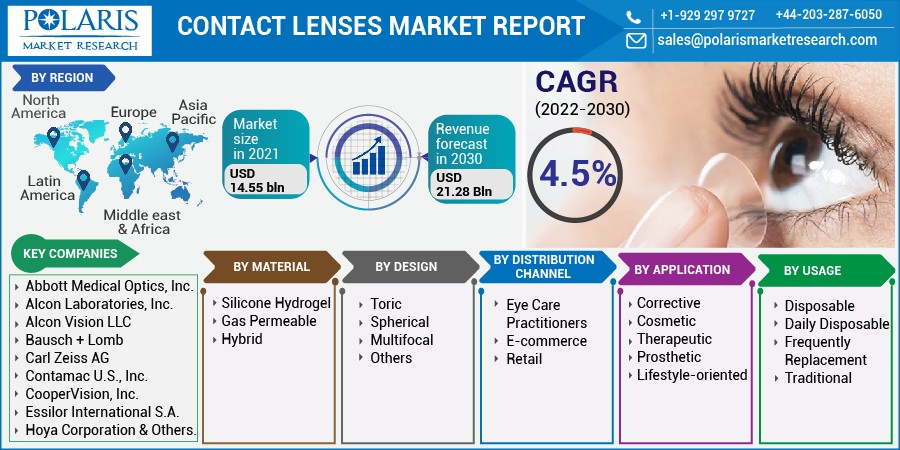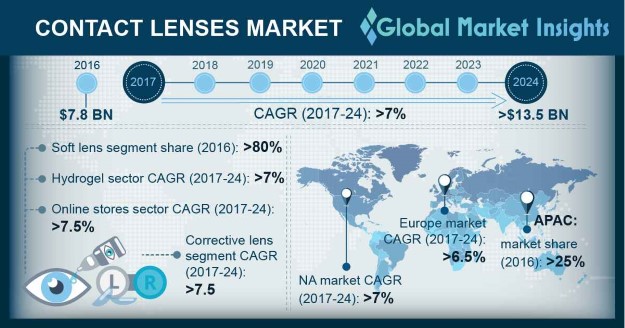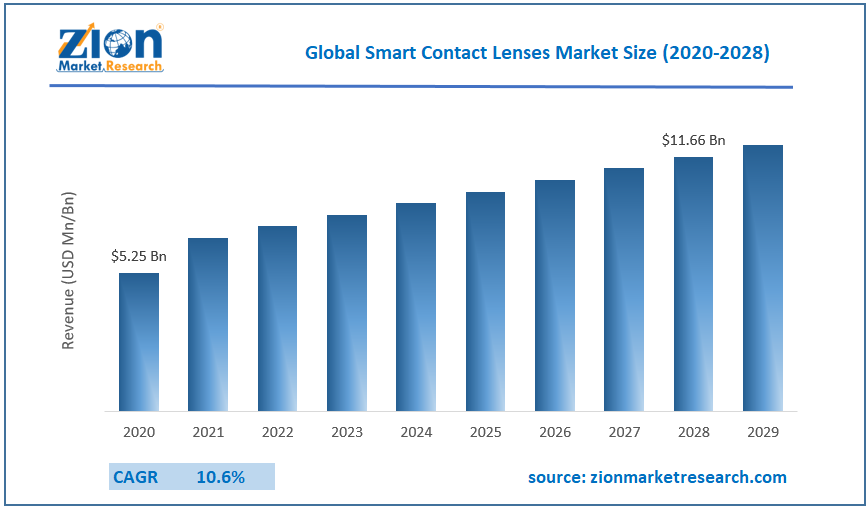This website uses cookies so that we can provide you with the best user experience possible. Cookie information is stored in your browser and performs functions such as recognising you when you return to our website and helping our team to understand which sections of the website you find most interesting and useful.

Global Statistics on Contact Lenses and Market Insights

Market Overview
In the dynamic landscape of consumer eyewear, contact lenses play a pivotal role, offering vision correction solutions to millions worldwide. Let’s delve into key insights and projections for the global contact lenses market.
Revenue and Growth
In 2024, the global contact lenses market is poised to reach a remarkable revenue of US$19.28 billion. The projected Compound Annual Growth Rate (CAGR) from 2024 to 2028 stands at 3.87%, indicating a steady and consistent growth trajectory. Notably, the United States is expected to contribute significantly, with an estimated revenue of US$6,049 million in 2024.

Per Capita Spending
When considering revenue per person, the contact lenses market is anticipated to generate US$2.49 per person globally in 2024. This metric reflects the individual contribution to the market’s economic impact.
Volume Projections
Looking ahead, by 2028, the volume of the contact lenses market is expected to reach a substantial 8.4 billion pieces. In 2025, a volume growth of 2.3% is projected, demonstrating sustained market expansion. On an individual level, the average volume per person is expected to be 1.0 piece in 2024.

Regional Insights
Key regions influencing the global contact lenses market include the United States, China, Canada, the United Kingdom, and Japan. The United States, in particular, is witnessing a surge in demand for daily disposable contact lenses, attributed to their convenience and hygiene benefits.
Market Dynamics and Trends
Eyewear Market Growth
The broader eyewear market is experiencing robust annual growth globally, driven by shifting consumer megatrends, market transformations, and technological innovations. Factors such as an aging population and increased screen time, especially among the youth, contribute to the demand for vision correction and preventive eye care.
Demographic Impact
Ageing emerges as a significant demographic factor impacting eye care, with the need for vision correction becoming more complex as individuals grow older. This underscores the importance of continuous innovation and solutions tailored to diverse age groups.
Methodology and Data Coverage
Data Sources
The data encompasses consumer spending on eyewear products, including spectacle lenses, sunglasses, eyewear frames, and contact lenses. Both offline and online retail sales channels contribute to the figures, providing a comprehensive view of consumer behavior.
Modeling Approach
Market sizes are determined through a meticulous bottom-up approach, considering factors specific to each market. Annual financial reports, industry associations, third-party sources, historical developments, and primary research contribute to the modeling process. Key indicators include GDP, consumer spending, and healthcare spending.
Forecasts and Considerations
Diverse forecasting techniques are applied, aligning with the behavior of relevant markets. The impact of global events such as the COVID-19 pandemic and the Russia-Ukraine war is considered at a country-specific level. The market undergoes biannual updates, with additional ad hoc updates when significant changes occur.
Fast Facts: Who Uses Contact Lenses?
- An estimated 45 million people in the U.S. wear contact lenses.
- Two-thirds of contact lens wearers are female.
- The average age of contact lens wearers worldwide is 31 years old.
- Approximately 8% of wearers are under 18, 17% are aged 18-24, and 75% are adults aged 25 and older.
Contact Lenses in the U.S.
- Contact lenses are regulated by the U.S. FDA as medical devices.
- Rigid lenses were first produced in the U.S. in 1938-1940, followed by soft lenses in 1971.
- Soft lenses constitute 90% of contact lens usage.
Benefits, Complications, and Prevention
Benefits
- Contact lenses offer a variety of vision correction options.
- They provide enhanced appearance and suitability for various activities.
- Children and teens report improved self-esteem when wearing contact lenses.
Complications & Risk Factors
- Serious eye infections affect 1 in 500 contact lens users annually.
- Improper care and hygiene behaviors contribute to infection risks.
- Keratitis, linked to improper lens use, leads to 1 million annual visits at a cost of $175 million.
Prevention
- Follow proper lens care instructions.
- Carry glasses as a backup.
- Prioritize regular check-ups with an eye care professional.
In conclusion, the global contact lenses market is poised for substantial growth, fueled by technological advancements, demographic shifts, and increasing consumer awareness. Ongoing monitoring of trends and developments is crucial, ensuring a comprehensive understanding of the market’s performance worldwide.






